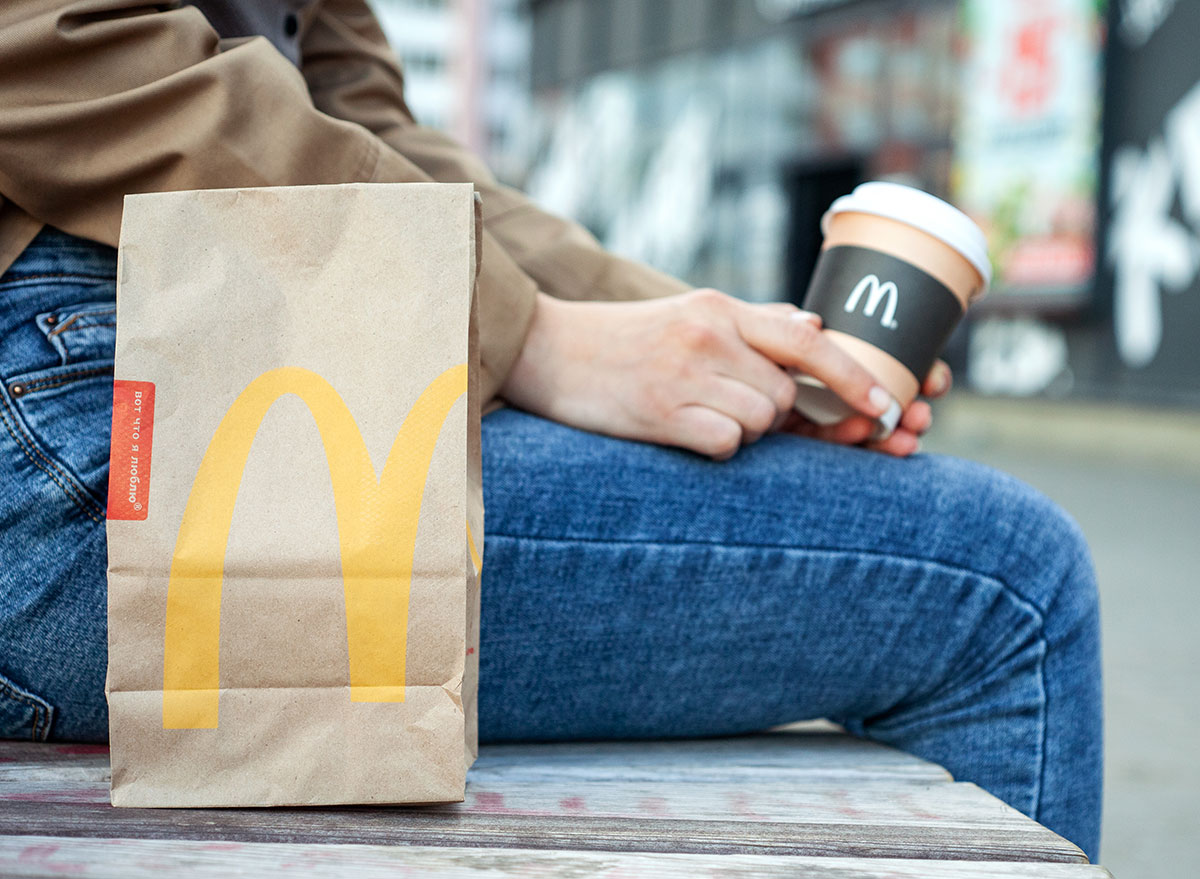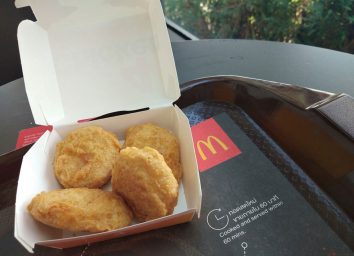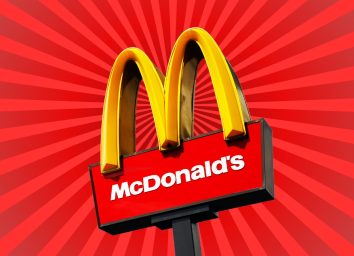Here's How Much McDonald's The CEO Says He Eats Every Week

In a recent interview with TIME Magazine, Chris Kempczinski, the McDonald's CEO, shared some insight on the future of Mcdonald's, including the fate of their famous ball pits and the highly-anticipated chicken sandwich. However, in the interview, Kempczinski also spoke of his particular habits when it comes to McDonald's meals, including how much of it he eats every week.
"I eat it five days a week, twice a day," says Kempczinski in the interview with TIME. "I have it every breakfast and lunch five days a week. I eat a fair bit of McDonald's. I know my way around the menu pretty well. So I have my days that I'm going to eat healthy, and then I have my cheat days. And the great thing about our menu is you can do both."
Not only that, but he even shared the specific "healthy meals" he likes to order from the menu. For breakfast, he orders an Egg McMuffin sandwich with no bacon (280 calories, 12 grams of fat), and enjoys it either with a cup of coffee or a small Diet Coke. For lunch, he sometimes enjoys their salads or the Filet of Fish with no tartar sauce (290 calories, 9 grams of fat). On cheat days, he enjoys a Quarter Pounder (510 calories, 25 grams of fat).
Is it healthy to eat McDonald's this much?
Even though Kempczinski claims these are his healthy orders, we were curious about the overall health of eating McDonald's at 10 different times during the week. So we spoke with two registered dietitians on the matter and asked what they thought of eating so much fast food on a regular basis.
While it's not the worst thing for you to order, Vanessa Rissetto MS, RD, CDN and co-founder of Culina Health, says it's certainly not the best. She points out that these meals are high in sodium, low in fiber, and overly processed.
"I would never say to someone you can't have an Egg McMuffin once or twice per week—understanding the parameters," says Risetto. "But on a daily basis, I would proceed with extreme caution. Also, Diet Coke is loaded with chemicals that have no benefit whatsoever so I'm not exactly sure what to say about that. I'm going to go out on a limb and say that this guy isn't the picture of perfect health, but someone please prove me wrong."
Amy Goodson, MS, RD, CSSD, LD, points out the lack of complex carbohydrates in fast food in general.
"The challenge with many fast-food restaurants, in general, is that they don't have many, or any, options for complex carbohydrates like 100% whole grain bread," says Goodson. "Many times, the meat or protein is fried or a higher fat version of the meat (like 80/20 beef versus 93/7), which adds saturated fat and calories. In addition, many times fruits and vegetables aren't prevalent on fast food menus. Finally, many fast food options are high in sodium (salt), which most Americans need to cut back on."
If McDonald's is so accessible, why aren't there healthier options?
McDonald's is one of the most accessible restaurants across the country. And yet while it is very accessible, Kempczinski points out that making healthier choices is the responsibility of the consumer, and that it's not up to McDonald's to tell a consumer what to eat.
But what if healthier options just aren't available? Especially when a lot of them were cut from the menu due to the pandemic.
"I think what we should [look at] is how McDonald's provides filling meals at a cheap rate and you can basically find one anywhere," says Risetto. "How does that speak to those in lower socioeconomic areas—where there are food deserts and the only place to get a salad is at McDonald's? I'm not suggesting that they start to provide all organic meats and fruits on their menus. But what if there were a way to make affordable, healthful food accessible to everyone?"
How to make fast food healthier
While McDonald's may not provide the healthiest options for consumers, Goodson has a few pointers on how you can make your meals overall healthier at a McDonald's, if that's your only option in terms of grabbing a quick meal.
"Let's say you grab oatmeal with fruit and an egg, or an egg sandwich with cheese on a whole-grain muffin or wrap for breakfast," says Goodson. Other options she included are grilled nuggets (which are available at places like Chick-Fil-A), salads, fruit, and grilled chicken sandwiches.
Goodson says an easy rule-of-thumb is to ask yourself the following question: Am I getting lean protein, complex carbohydrates, healthy fat, and lots of vegetables and fruits?
"If you are getting those items on a daily basis, then yes, it can be considered a healthy diet," says Goodson.
Another easy trick? Goodson says to surround your meal with "healthy friends." So if you order something that's higher in fat and calories (like a burger), pair it with a side salad and water instead. Really craving fries? Opt for a grilled chicken sandwich to go with it, along with some fruit.
For more healthy eating tips, be sure to sign up for our newsletter.








